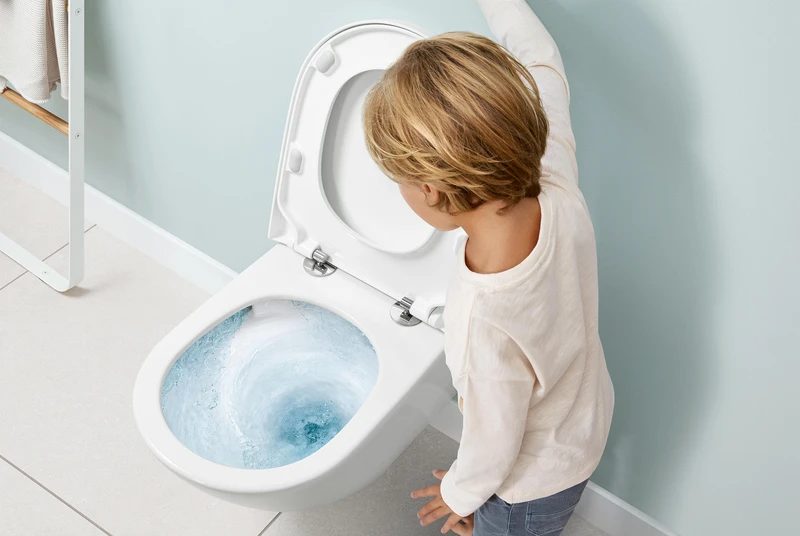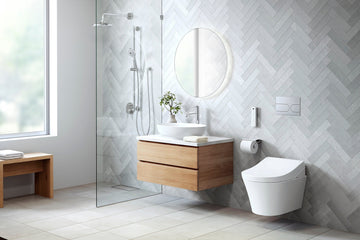In today's fast-paced world, efficiency is a key factor in enhancing customer satisfaction and operational effectiveness. One area where this is particularly important is in the management of public restrooms. Enter the era of queue management with smart toilets, an innovative approach that is transforming the way we think about public bathroom facilities.
The integration of advanced technology in public toilets is not just a futuristic concept; it is a practical solution to a real-world problem. By employing smart toilets equipped with the latest technology, facilities can now offer an unprecedented level of service that addresses both queue management and hygiene. But how exactly does this work, and what benefits does it bring to both users and facility managers? Let's dive deeper into this fascinating topic.

The Challenges of Traditional Restroom Management
Traditional restroom facilities often face several challenges, from managing foot traffic to maintaining cleanliness and ensuring that all amenities are functioning properly. With high visitor volumes in places like airports, shopping malls, and stadiums, the demand on these facilities is immense. Long queues can form, leading to frustration among users and a negative overall experience.
Moreover, maintaining these facilities to a high standard requires constant attention and significant resources. Facility managers are tasked with ensuring that restrooms are clean, supplies are stocked, and any technical issues are promptly addressed. This can be a daunting task without the aid of modern technology.
How Smart Toilets Improve Queue Management
Smart toilets are equipped with sensors and connectivity features that provide real-time data on usage patterns and restroom conditions. This information is crucial for effective queue management. For example, sensors can detect when a toilet is occupied and when it becomes available, allowing users to be directed to the nearest available facility, thus reducing wait times.
Additionally, smart systems can predict peak usage times and alert cleaning staff to prepare facilities accordingly. This proactive approach ensures that restrooms remain clean and fully functional, even during high-demand periods. The result is a streamlined operation that enhances user satisfaction and improves overall efficiency.
Enhancing Hygiene and User Experience
Alongside improved queue management, smart toilets also significantly enhance hygiene and the user experience. Features such as touchless flushing, automatic seat sanitization, and air purification systems contribute to a cleaner and more pleasant environment. These innovations are particularly important in the context of public health, as they help to reduce the spread of germs and illness.
Furthermore, the user experience is elevated through personalized settings that allow individuals to adjust features such as water temperature and seat positioning to their preferences. This level of customization is rarely seen in public facilities and demonstrates the potential of smart technology to transform everyday experiences.
The Future of Smart Toilets
As technology continues to advance, the capabilities of smart toilets are expected to grow. Future developments may include more sophisticated analytics that provide deeper insights into restroom usage patterns and the integration of AI to further optimize operations. The potential for incorporating renewable energy sources, such as solar panels, to power these systems is also being explored.
For more insights into innovative toilet solutions, visit tiny house toilet innovations and explore the latest advancements.
Conclusion
The integration of queue management with smart toilets represents a significant step forward in the evolution of public restroom facilities. By leveraging technology to improve efficiency, hygiene, and user satisfaction, these systems offer a blueprint for the future of public spaces. As we continue to embrace smart technology, the possibilities for enhancing everyday experiences are endless.
For those interested in exploring unconventional toilet solutions, a visit to unconventional toilets offers a fascinating glimpse into the creative innovations shaping this industry.

FAQ
What are smart toilets?
Smart toilets are advanced bathroom fixtures equipped with technology such as sensors, connectivity, and automated features that enhance hygiene, efficiency, and user experience.
How do smart toilets manage queues?
Smart toilets use sensors to monitor usage and availability, allowing users to be directed to the nearest available facility, thus reducing wait times and improving queue management.
Are smart toilets environmentally friendly?
Yes, smart toilets often incorporate features that reduce water usage and support sustainability. Some models are also exploring the use of renewable energy sources.
This article contains affiliate links. We may earn a commission at no extra cost to you.






